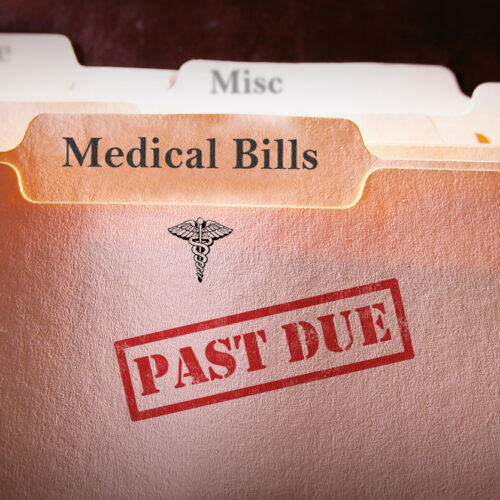Healthcare Law Alert: NJ Health Care Transparency Act Effective on July 1, 2021
6/8/2021
New Jersey’s Health Care Transparency Act, signed into law by Governor Phil Murphy on December 14, 2020, will become effective on July 1, 2021. The law is intended to provide certain “transparency” to consumers of health care services relating to the specific professional degree, training, and qualifications a health care professional possesses in order to promote “truth in advertising” by health care professionals and avoid consumer confusion or misguidance.
“Health care professionals” under the law include, but are not limited to, individuals regulated by the following New Jersey professional licensing boards and advisory councils or committees: Medical Examiners, Nursing, Dentistry, Optometrists, Pharmacy, Chiropractic, Acupuncture, Physical Therapy, Orthotics and Prosthetics, Psychology, Ophthalmic Dispensers and Technicians, Audiology and Speech-Language Pathology, Occupational Therapy, Psychoanalysts. The following are not “health care professionals” under the law: (i) individuals licensed in veterinarian medicine, or (ii) health care professionals working in non-patient care settings and who do not have any direct patient care interactions.
The new law contains several components, as follows:
Advertisements for Health Care Services
Advertisements for health care services:
- that include the name of a health care professional must identify the type of professional license and professional degree issued to the health care professional
- “professional license” means the State-issued credential to identify the profession practiced by the health care professional, such as “physician,” “chiropractor,” “advanced practice nurse,” “dentist,” “optometrist,” “psychologist,” “physician assistant,” “acupuncturist,” and “podiatrist.”
- “professional degree” means the academic degree held by the health care professional, such as medical doctor (M.D.), doctor of osteopathy (D.O.), doctor of dental surgery (D.D.S.), doctor of medicine in dentistry (D.M.D.), doctor of podiatric medicine (D.P.M.), doctor of optometry (O.D.), doctor of chiropractic (D.C.), and doctor of nursing (D.N.).
- must not contain deceptive or misleading information, including, but not limited to, any affirmative communication or representation that misstates, falsely describes, holds out, or falsely details the health care professional’s skills, training, expertise, education, public or private board certification, or licensure.
Advertisements include:
- any communication or statement that is directly controlled or administered by a health care professional or a health care professional’s office personnel, whether printed, electronic or oral, that names the health care professional in relation to his/her practice, profession, or institution in which the individual is employed, volunteers, or otherwise provides health care services.
- this includes business cards, letterhead, patient brochures, e-mail, Internet, audio and video, and any other communication or statement used in the course of business or where the health care professional is utilizing a professional degree or license to influence opinion or infer expertise in a health care topic.
Advertisements do not include:
- office building placards or exterior building signage.
In-Person Care
When providing in-person care (excluding telehealth or telemedicine services), each health care professional must communicate the professional license and professional degree held by the professional, in all of the following formats:
- a name tag or embroidered identification to be worn during all patient encounters that include, at minimum:
- the full name of the health care professional
- in the following settings, at the discretion of facility administrators, the health care professional’s full first name and last name or full first name and the first letter of the last name may be used: hospitals, licensed ambulatory care facilities or behavioral health facilities, or long-term care facilities
- the professional license and professional degree issued to the health care professional, and
- a recent photograph of the health care professional if providing direct patient care at a hospital, unless otherwise directed by hospital administrators
- the full name of the health care professional
- a poster or other signage at the office or offices where the health care professional provides health care services to scheduled patients in an ambulatory setting, that states the type of professional license and professional degree held by the health care professional; the poster or signage must use a font of “sufficient size” and be placed in a “clear and conspicuous manner”
- “office” does not include in-patient hospital or emergency department patient care.
Supervision or Collaborative Practice Agreements
A physician (M.D. or D.O.) who supervises or participates in collaborative practice agreements with non-physician health care professionals, including, but not limited to, physician assistants and advance practice nurses, who provide in-person patient care at the same practice location must:
- clearly and conspicuously post in each office when a physician (M.D. or D.O.) is present
- “office” does not include in-patient hospital or emergency department patient care.
Advertising or Holding out “Certification”
A physician (M.D. or D.O.) may not advertise or hold himself/herself out to the public in any manner as being certified by a public or private board or “board certified” unless the board either:
- is a member of the American Board of Medical Specialties (ABMS) or the American Osteopathic Association (AOA), or
- is a non-ABMS or on-AOA board that requires as prerequisites for issuing certification:
- successful completion of a post-graduate training program approved by the ACGME or the AOA that provides complete training in the specialty or subspecialty certified by the non-ABMS or non-AOA board;
- certification by an ABMS or AOA board covering that training field that provides complete ACGME- or AOA-accredited training in the specialty or subspecialty certified by the non-ABMS or non-AOA board; and
- successful passage of examination in the specialty or subspecialty certified by the non-ABMS or non-AOA board.
Any advertisement for a physician (M.D. or D.O.) must state the full name of the certification board.
Health care providers must take quick action to get advertisements, name tags, signage, and the other required items into place in the coming weeks.
For additional information or assistance, contact:
Lani M. Dornfeld, CHPC, Member, Healthcare Law, at 973-403-3136 or ldornfeld@bracheichler.com
John D. Fanburg, Managing Member and Chair, Healthcare Law, at 973-403-3107 or jfanburg@bracheichler.com
Carol Grelecki, Member, Healthcare Law, at 973-403-3140 or cgrelecki@bracheichler.com
Joseph M. Gorrell, Member, Healthcare Law, at 973-403-3112 or jgorrell@bracheichler.com
Related Practices: Healthcare Law
Related Attorney: Lani M. Dornfeld, John D. Fanburg, Carol Grelecki, Joseph M. Gorrell













